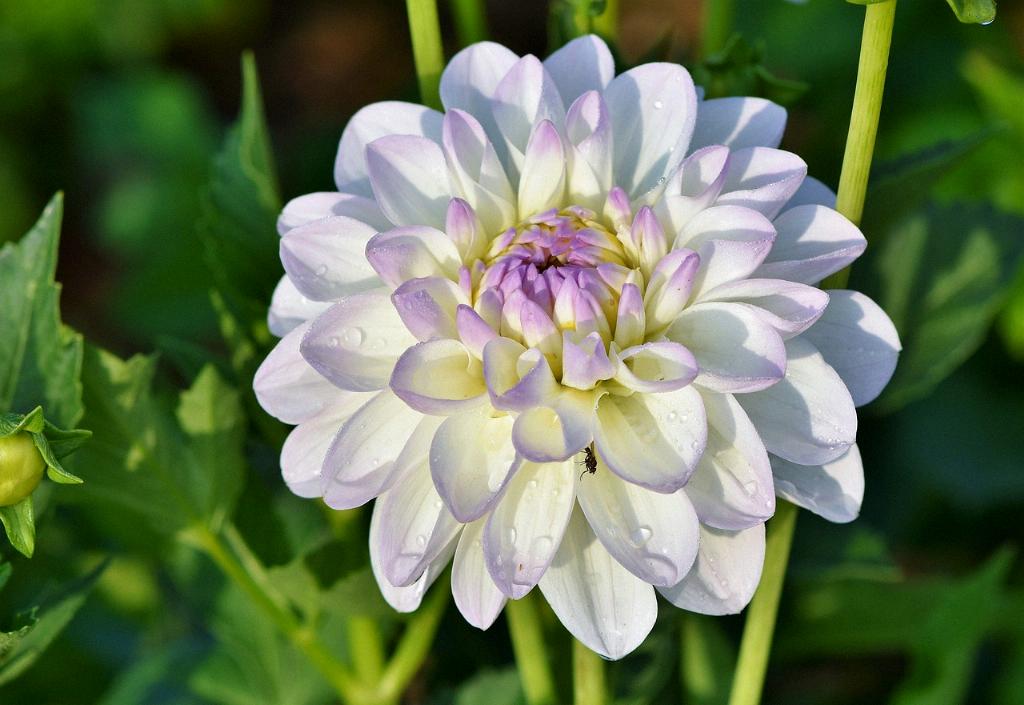If you’re looking to ensure your dahlias receive the nourishment they need to thrive and produce stunning blooms, proper fertilization is essential. When it comes to fertilizing dahlias, consistency and choosing the right type of fertilizer are key factors in promoting healthy growth and vibrant flowers.
Frequency of Fertilization
It is recommended to fertilize your dahlias approximately every 2-3 weeks during the growing season. This regular feeding schedule helps provide the necessary nutrients for robust plant development and flower production. Consistency in fertilizing ensures that your dahlias receive a continuous supply of essential elements.
Choosing the Right Fertilizer
When selecting a fertilizer for your dahlias, opt for a low nitrogen formula. High nitrogen can lead to excessive foliage growth at the expense of flower production. Alternatively, you can choose a slow-release fertilizer that gradually feeds the plants over time. Be sure to follow the manufacturer’s recommendations regarding application rates and frequency.
Fertilizing in Different Planting Environments
Depending on where your dahlias are planted, the frequency of fertilization may vary. For dahlias in raised beds, you’ll typically water less frequently than those in containers but more often than those planted directly in the ground. This is due to the drainage properties of raised beds, which can impact nutrient availability to the plants.
Feeding Newly Planted Dahlias
When first planting dahlias, it’s beneficial to provide a light initial feeding to support their establishment. A balanced fertilizer with equal parts nitrogen, phosphorus, and potassium can help encourage healthy root development and early growth. As the plants mature, you can adjust the fertilizer ratio to meet their changing nutritional needs.
Applying Fertilizer Correctly
Proper application of fertilizer is essential to avoid damaging the plants and to ensure optimal nutrient uptake. When feeding dahlias, apply the fertilizer evenly around the base of the plants, taking care not to let it come into direct contact with the stems or leaves. Lightly incorporate the fertilizer into the soil surface, then water thoroughly to help the nutrients reach the root zone.
Monitoring Plant Response
Observing how your dahlias respond to fertilization can provide valuable insights into their nutritional needs. If you notice signs of nutrient deficiency, such as yellowing leaves or stunted growth, adjusting the fertilization schedule or type of fertilizer used may be necessary. Regular monitoring allows you to fine-tune your feeding regimen for optimal plant health.
Avoiding Over-Fertilization
While proper fertilization is essential for dahlias, over-fertilizing can have detrimental effects on their growth. Excessive nutrients can lead to imbalanced growth, reduced flowering, and increased susceptibility to pests and diseases. It’s important to follow recommended feeding guidelines and not exceed the prescribed amounts to prevent issues associated with nutrient overload.
Seasonal Fertilization Considerations
As the growing season progresses, the nutritional requirements of your dahlias may change. Adjusting the fertilizer regimen based on the stage of growth can help support the specific needs of the plants. For example, increasing phosphorus levels during flowering can promote bigger and brighter blooms, while adjusting nitrogen levels during vegetative growth can encourage strong, healthy foliage.
Winterizing Dahlias
As the end of the growing season approaches, preparing your dahlias for winter is essential to ensure their survival. Gradually reduce fertilization in the fall to help the plants transition into dormancy. Providing a final light feeding before frost sets in can support the development of healthy tubers for the following year’s growth.
Organic Fertilizer Options
If you prefer to use organic fertilizers on your dahlias, there are a variety of options available that can provide the necessary nutrients without the use of synthetic chemicals. Organic fertilizers, such as compost, manure, or fish emulsion, can be beneficial for soil health and overall plant vitality. When using organic fertilizers, be mindful of application rates to avoid nutrient imbalances.
Continual Care and Monitoring
Successfully fertilizing your dahlias involves ongoing care and monitoring throughout the growing season. Regularly assessing the plants’ appearance, growth patterns, and flowering performance can help you make informed decisions about their nutritional needs. By maintaining a consistent fertilization routine and adapting it as needed, you can help your dahlias reach their full potential and showcase a stunning display of blooms.

